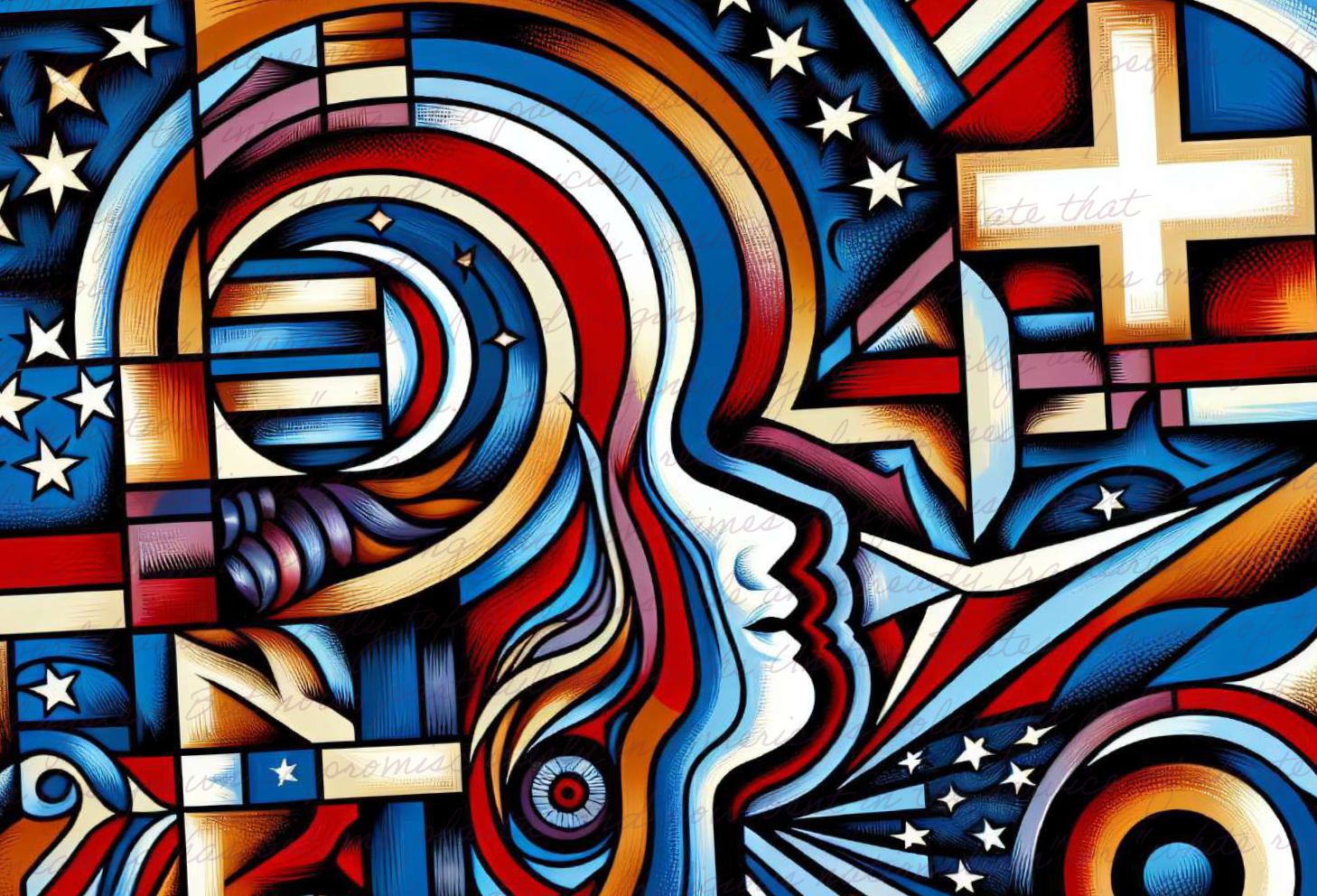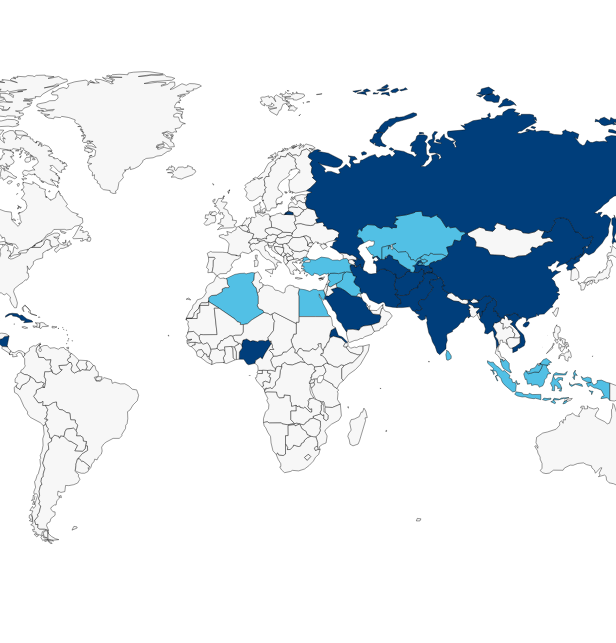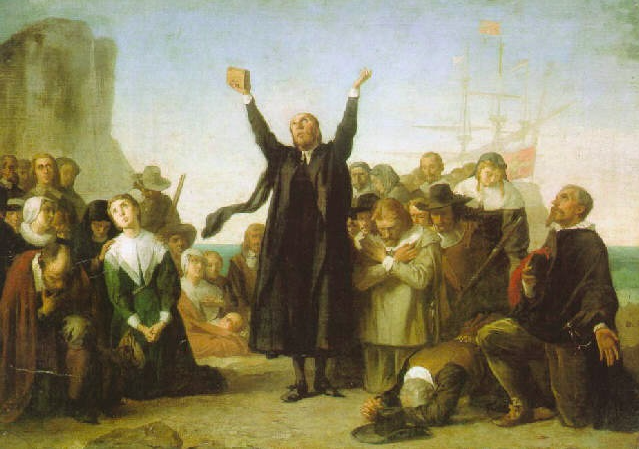Ruling in favor of Obergefell, the Supreme Court decided that states must issue a marriage license between people of the same sex, legalizing same-sex marriage in all 50 states. In this week’s conversation, scholars discuss the implications of this decision for religious freedom and explore the wider role of religion in American public life.
By: Steven D. Smith
Religious freedom is only obliquely addressed in Obergefell v Hodges. Justice Kennedy’s majority opinion mainly declaims on something that he dubiously calls “liberty,” and on an august institution (albeit one that seemingly eludes definition) that he chooses to call “marriage.” The dissenting opinions mainly denounce the judicial usurpation of democratic self-governance. Still, the decision has important, if unpredictable implications for religious freedom, and it is our painful duty to contemplate—“through a glass, darkly,” so to speak—what these might be.
We might start by attempting to consider Obergefell as what it purports to be—that is, a legal decision. Late in its opinion, the Court acknowledges religious opposition to same-sex marriage. The Court then says:
“The First Amendment ensures that religious organizations and persons are given proper protection as they seek to teach the principles that are so fulfilling and so central to their lives and faiths, and to their own deep aspirations to continue the family structure they have long revered. The same is true of those who oppose same-sex marriage for other reasons” (Slip op. at 27).
This pronouncement suggests that religious believers continue to enjoy a right to advocate views inconsistent with the law that the Supreme Court has laid down. That is not nothing. Not quite. It would seem, for now, that although the Bible cannot shape public policy, it can still be believed and even preached. So if (as sometimes happens in other countries) a government agency tries to impose legal sanctions on, say, a preacher who teaches biblical precepts regarding marriage and homosexual conduct, the Court’s dictum could be invoked in the preacher’s behalf.
Whether the dictum could be invoked successfully is uncertain, of course: Kennedy’s apparent forgetting in Obergefell of his peroration in United States v. Windsor to the states’ authority to define marriage reminds us how fickle Supreme Court rhetoric (and Justices) can be. But then, as various commentators have pointed out, the rhetoric about states didn’t actually make much sense in Windsor anyway.
Actually, the Obergefell majority opinion is probably more noteworthy for what it does not say about religious freedom. Would religious freedom protect traditional religious institutions in anti-discrimination suits? Might religious institutions with traditional views of marriage lose their tax exempt status? That last issue came up in the oral argument; in a response many found striking, the Solicitor General declined to dismiss the possibility. On these issues, the majority opinion offers nothing to reassure—an omission that, as Chief Justice Roberts observes in his dissent, seems ominous (Slip op. at 28). Indeed, the Court’s explicit equation of the rights of religious believers with those of non-religious objectors at least hints that religious freedom would not dictate any special protection.
It is possible, of course, that the Court’s reticence on these issues simply reflects a proper respect for the judicial role, which traditionally has discouraged pronouncements on matters not actually before the Court. Still, given the Court’s serene disregard for the traditional judicial role in the decision itself, this would be a curious attitude for the Court to take—like the burglar who breaks in and steals all your stuff but out of respect carefully wipes off his muddy shoes on the doormat.
Other conventionally “legal” implications of the decision could be discussed. For example, in the “balancing” of interests that supposedly occurs under laws such as the Religious Freedom Restoration Act, will Obergefell mean that the anti-discrimination interest is now supposed to be given more weight? Lawyers and legal commentators will no doubt be conjecturing learnedly on such questions, as they must. But one can play along with such shams only for so long; then it becomes embarrassing.
The real significance of Obergefell lies not in its legal content (which, as the Chief Justice persuasively shows, is negligible), but rather in its political and cultural implications. Politically, the decision both reflects and reinforces the movement to constitutionalize one contemporary vision of sexual liberty and equality. And in contrast to the sympathetic couples portrayed in the Court’s opinion, many of the actors in this movement are, as Douglas Laycock has explained, aggressive and uncompromising.
Thus, commenting on litigation that insists on enforcing anti-discrimination laws against religiously scrupulous counselors, photographers, and pharmacists—even though these professionals’ services or products are readily available elsewhere, and even when no sensible same-sex couple would actually want the assistance of, say, a counselor or photographer who is religiously opposed to their union—Laycock observes that the goal is not to gain a needed remedy but rather to punish the incorrectly-minded, and to drive them out of business. (Laycock argues, to be sure, that people on the other side—the religious conservatives—are equally intransigent. I have commented on Laycock’s assessment here.)
The Court’s decision supports this movement not only in an obvious and direct way, but in an indirect way as well. Although the national experiment in fundamentally revising an institution that has been central to civilization for centuries was initiated in earnest less than a generation ago, Obergefell peremptorily dictates that the debate has now gone on long enough. People can still believe and opine away as they wish, of course; but for practical legal purposes the controversy is over. Or at least so decrees the Court, thus manifesting the same disdain for pluralism discernible in the more aggressive political actors.
Culturally, the decision mirrors and gives sustenance to a movement of society—and, derivatively, of the judiciary— away from a traditional or Christian or biblical cultural framework in the direction of one that might be described as…what?
Secular? That would be a common description, but it does not really capture the passion, the zeal, the imperturbable self-righteousness so often apparent on the ostensibly secular side of this and related controversies, such as that over the recent Indiana religious freedom law. Borrowing from a title by Christopher Lasch, some might describe the culture as narcissistic. The adjective seems apt for the majority opinion, which is full of Justice Kennedy’s usual sententious rhetoric about every individual’s right to define the meaning of existence for herself, etc., etc. Or, taking a cue from an old set of lectures by T. S. Eliot, we might regard the emerging (and perhaps by now emerged , and judicially anointed) culture as pagan. (See here .)
However we describe it, the developing culture is unlikely to be friendly to genuine religious freedom. In our tradition, as I have argued in a recent book , religious freedom is basically a Christian contribution. It has its roots, directly or at one or two removes, in Christian premises. Whether religious freedom can remain viable once cut off from its Christian roots is a crucial and debatable question. But recent developments give cause for skepticism. And for any who find this development troublesome, Obergefell provides no comfort.
On the contrary: at least for the immediate future, such controversies may turn on the moods and musings, the preenings and panderings, of…one Anthony Kennedy. Now that is a frightening prospect.
Steven D. Smith is a Warren Distinguished Professor of Law at the University of San Diego and co-director of the university’s Institute for Law and Religion.
This piece was originally authored on June 29, 2015 for the Religious Freedom Project at Georgetown’s Berkley Center for Religion, Peace, and World Affairs.
THE RFI BLOG

Myths of Religious Nationalism in America and Abroad

France’s Olympic Hijab Ban Violates International Law And Exacerbates Tensions

RFI Briefs USCIRF on Lessons from 25 Years of U.S. Designating Religious Freedom Violators

Thought Police: Protecting the People from Prayer

A Religious “Delaware”: Establishing a State Haven for Religious Corporations
CORNERSTONE FORUM

Challenges to Religious Freedom in Iraq and the Critical Need for Action

Public Bioethics & the Failure of Expressive Individualism

Religious Liberty in American Higher Education

Scotland’s Kate Forbes and the March of Secularism


